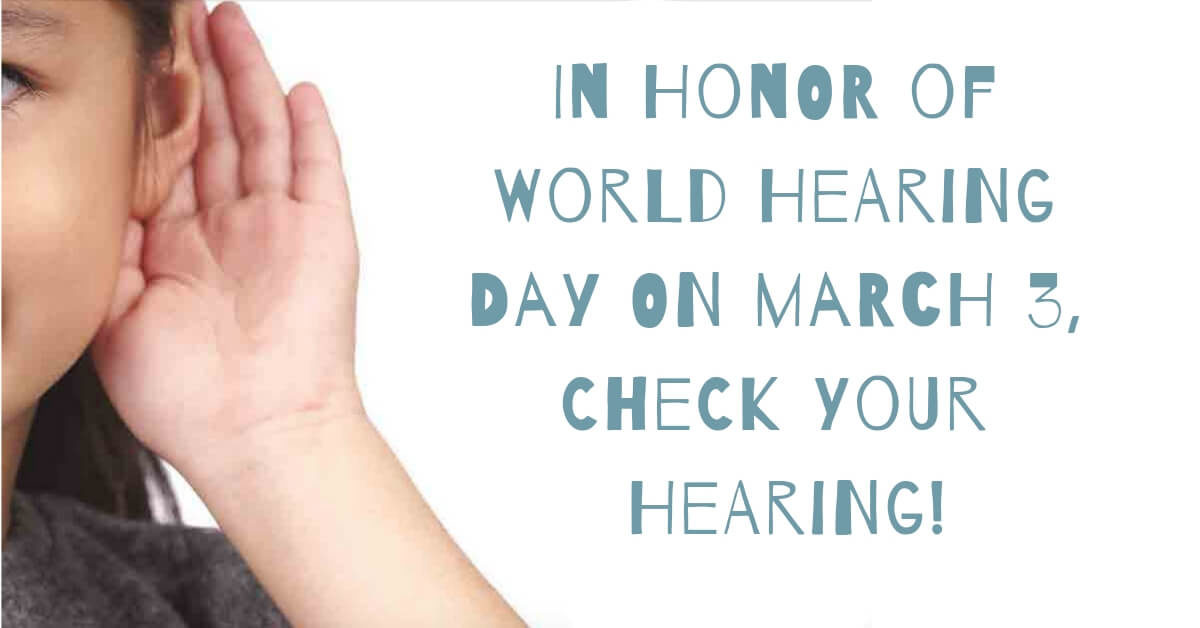On March 3 Celebrate World Hearing Day by Checking Your Hearing
This year’s World Health Organization’s theme for World Hearing Day is “Check Your Hearing.” And what a great suggestion that is! Identifying hearing issues early means early treatment and keeping in touch with all the sounds in your life that are so important. Untreated hearing loss can affect both your mental and physical health. Take the first step to better hearing health and Check Your Hearing – call Pacific Hearing Care today and schedule an appointment.
Hearing Loss Across the Globe
WHO estimates there are 466 million people around the world living with hearing issues. That’s a little over 6% of the total world population. Of that number, 422 million are adults, or about 93%. More men than women have hearing loss and 7% of that number – or 34 million – are children. About one third of those affected are over the age of 65. And that’s important because the hearing loss statistics are going to go up due to people living longer. WHO wants to encourage people, regardless of age, to get the needed hearing evaluations and treatment! The number of people with disabling hearing loss could be over 900 million by the year 2050 if perceptions and treatment of hearing loss do not change.
Hearing Risk Factors
Exposure to loud sounds, both in occupational and recreational settings, chronic ear infections and some medication usage are some of the hearing risk factors. In all countries, workplace noise exposure is the second most common injury risk factor in the workplace, second only to physical injury. Noise exposure contributes to 22% of workplace health issues. It can be occasional loud sharp noises or prolonged exposure to noise throughout the day. The United States, and many other countries, have taken steps to decrease workplace noise issues. The Occupational Safety and Health Administration in the United States sets standards for workplace noise and monitors those issues.
Children and Hearing Loss
Your parents were right when they said to turn down the volume when you were listening to music! In 2015, WHO released a study that revealed 1 billion young people were at risk to develop hearing loss due to their listening habits. Earbuds and headphones deliver dangerously loud sounds from portable listening devices, and loud volumes for prolonged periods of time poses a risk for hearing loss.
Portable listening devices such as iPods, smart phones, and MP3 players have increased poor listening habits. More than 50% of all people using portable listening devices are using them at a sound level that is considered unsafe – anything over 85 decibels can cause harm to your hearing after just a few hours Workout facilities that use loud music to boost customers’ adrenaline while they are working out and people crank up the volume to shut the world out while they run. These are both scenarios in which you can compromise your hearing health.
In young children, noise-induced hearing loss can impair language skills. Learning disabilities, anxiety and attention seeking behavior, and problems with social development are issues associated with hearing loss in children. Educate your child about safe listening and emphasize that hearing loss is permanent. Limit their exposure to loud activities and personal audio devices by using apps to control the volume.
About 700 million people each year develop ear infections and the majority of those are children. Research indicates more than 50% have chronic ear infections which contribute to their hearing loss. Early diagnosis and treatment are the key to avoiding that. Antibiotics and chemotherapy are also being studied as factors involving hearing loss over time.
Check Your Hearing!
WHO estimates that failing to address hearing loss amounts to an overall global cost each year of about $750 billion. Hearing loss not only affects you, but also those around you. WHO advises screening for early identification of hearing loss, and if a hearing loss is detected, to seek treatment with hearing devices. Captioning, sign language education along with hearing devices are cost effective strategies to mitigate hearing loss and the consequences.
This March 3, call us at Pacific Hearing Care to take that step towards better hearing health. Unfortunately, many adults wait up to five years before they get their hearing issues taken care of – even if they’ve been diagnosed with hearing loss. Don’t wait, don’t “get used to it,” don’t avoid treating hearing loss!

